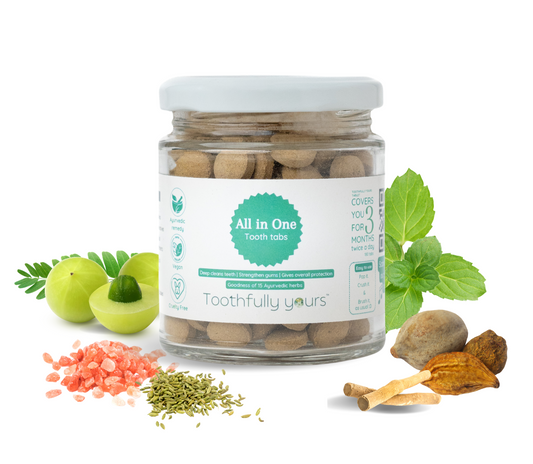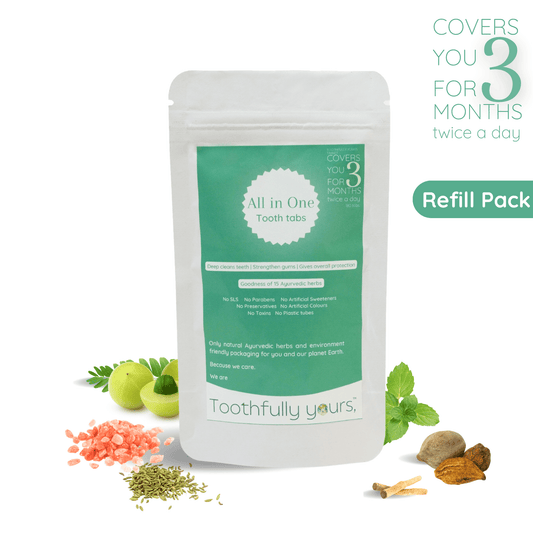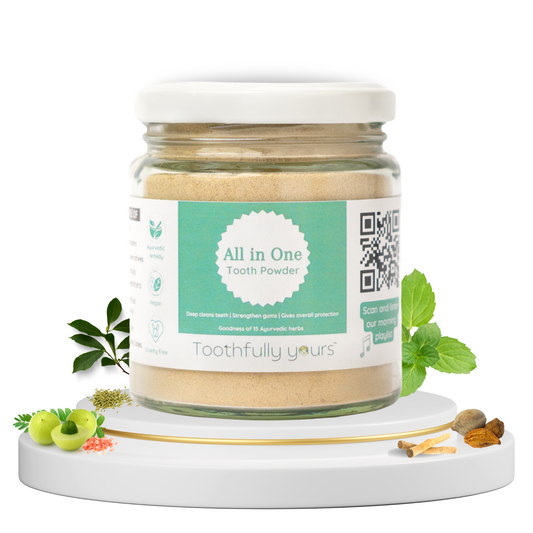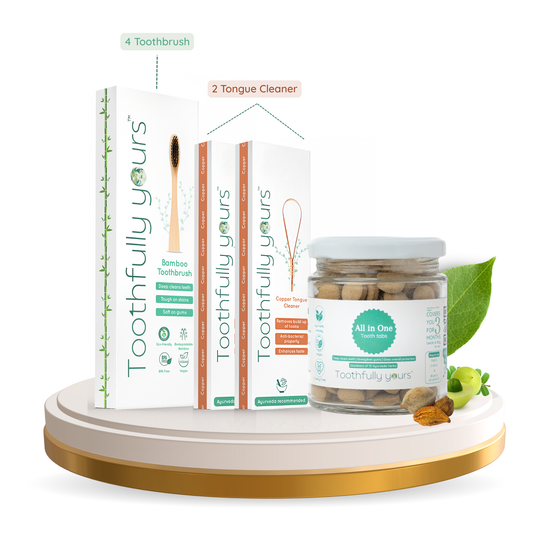
Are toothpastes safe or are toothpastes harmful?
Toothpaste is a staple in dental hygiene routines worldwide, but concerns have been raised about the safety of its ingredients. This article delves into the debate surrounding toothpaste safety, examining common ingredients, potential risks, and best practices for maintaining oral health.
The Evolution of Toothpaste:
Since ancient civilizations, humans have sought methods to clean their teeth. Early toothpaste formulations varied widely, incorporating ingredients like crushed bones, shells, and herbs. Over time, toothpaste evolved, the modern toothpaste, as we know it today, began to take shape in the 19th century. In the early 1800s, British chemist John Harris developed a formulation called "Harris's Toothpaste," which was one of the first commercial toothpaste products to be sold in a jar.
The first commercially produced toothpaste in a collapsible tube was introduced by Dr. Washington Sheffield in the United States in 1873. This innovation made toothpaste more convenient and accessible to the masses, leading to widespread adoption of oral hygiene practices.
Over the years, changes in consumer preference have led to the development of a wide range of toothpastes – from being available in various colours, flavours and perceived benefits.
Common Toothpaste Ingredients:
Toothpaste ingredients serve various purposes (at least what they claim), from removing plaque and debris to preventing cavities and freshening breath. But real shock comes when we read the ingredients list and do not find any particular ingredient which is either nourishing or has medicinal benefits to counter plaque, cavities or bad breath. Occasionally few ingredients like calcium carbonate or few others could be found with 10 other ingredients used to make the product visually appealing rather than effective. Many oral care products contain harsh toxic chemicals such as sodium lauryl sulphate(SLS), fluoride, triclosan, parabens, artificial colours, artificial sweeteners, titanium dioxide, and many more. Yes! The same chemicals we have been trying to avoid in shampoo, face cream, moisturiser, and whatnot are present in our toothpaste!!! These chemicals are not only harmful to teeth and gums but can also cause severe damage to overall health.
Are toothpaste safe?
Even with all these ingredients toothpaste is generally considered safe – with argument, these ingredients like SLS, Artificial colours or flavours, preservatives are in small quantities and should not affect adversely to any person. However, transparency in the oral care products is almost negligible. Customers should be aware of the ingredients which they are consuming through toothpaste and should not be duped by large marketing campaigns and flashy colours of the product. Hence, it is always a good idea to thoroughly check the ingredients list and only buy a toothpaste with minimal chemicals and no toxins.

EDITOR’S PICK
Oral Care routine your smile deserves.
Ayurveda's remedies with highly effective herbs and nothing else.
Check Now →Coming to the same point - these ingredients like SLS, Artificial colours or flavours, preservatives are in small quantities and should not affect adversely to any person. However, one small thing which is missed in this argument - Is the exposure of toxins in small quantities for one’s lifetime ( you have brushed your teeth every day till now and will be doing the same for the rest of your life, isn’t it?) is safe? Would these ingredients won’t cause any damage to one’s health when exposed for a stretch of 4-5 decades?
To mitigate potential risks associated with toothpaste, consumers should check the ingredients list first and then the flashy colours, marketing and flavours.
Allergic Reactions and Sensitivities Related to Toothpastes
Few reactions which can be observed due to harsh reaction of toothpaste:
1. Canker Soars: Many people can develop canker soars due to harsh chemicals like SLS and others.
2. Loss of sweet taste: Temporary loss of sweet is observed due to diffusion of taste buds by harsh chemicals in toothpaste.
3. Aggravation of underlying symptoms: With no proper ingredients for soothing dental issues and act as mitigating agent, cosmetic ingredient present to make toothpaste look and taste better can deteriorate the health of teeth and gums.
How to Choose a Safe Toothpaste?
1. First thumb rule is read ingredients.
2. Check reviews, what other customers are saying.
3. Buy from a brand who are there to solve your queries and not only sell the products.
Alternatives to Traditional Toothpaste:
For individuals seeking natural or toxins-free alternatives to traditional toothpaste, several options are available. These include homemade toothpaste recipes using ingredients like baking soda, coconut oil, and essential oils. As per ayurveda, herbs and minerals like – Triphala, Trikatu, Neem, Babool, Miswak, Rock salt are great ingredients to clean teeth and take care of your gums, remove plaque and fight bad breath. These all herbs along with 8 others can be found in Toothfully yours Tooth tabs – All in One tooth tabs.
How to use tooth tabs?
Simple!! Pop it. Crush it. And brush it, as usual.
Other Helpful Ways to Take Care of Your Teeth and Gums.
Brushing teeth is only half job done. For complete care of oral cavity, brushing should be accompanied by an oral care routine. Following should be performed with brushing for better results.
Tongue scraping: Along with brushing, scraping the tongue is also very important. The scraping of the tongue helps remove toxins and bad bacteria and stops their growth. It also keeps the palate clean and improves the sense of taste.
Gum massage: One of the most important and most neglected steps in an oral care routine is massaging the gums. Massaging gums with finger tips improves blood circulation in the gums, keeps them clean, and makes them strong and firm. Stronger gums prevent the loosening of teeth due to their strong grip over them. In ancient times in India, people used to brush their teeth with their finger tips, which naturally massaged the gums; hence, they had strong teeth even at the age of 80.
Gargling: Thorough gargling is a very important mini-step in the oral care routine. As it is not possible to brush every time after a meal or a snack, gargling is the quickest way to remove any remains in the teeth, stop plaque formation, and keep fresh breath.
Flossing: Flossing is a great way to give your teeth and gums a thorough cleaning. Flossing once a day could be very beneficial or can be done on alternate days to keep gum lines and spaces between the teeth clean. It helps keep teeth clean in tough spots where a brush cannot reach properly and stops bad breath.
Oil Pulling: The ancient Ayurvedic practice of oil pulling involves swishing a tablespoon of oil (such as coconut or sesame oil) in your mouth for 10–15 minutes. Oil pulling is believed to remove toxins from your mouth, promote healthy gums, and freshen your breath. Oil pulling can be done once a week to keep oral health intact.
Healthy diet: Eat a balanced diet that includes plenty of fruits and vegetables, whole grains, and lean protein. Avoid sugary and acidic foods, which can erode your tooth enamel.
FAQs about Toothpaste Being Safe or Harmful
Here are quick FAQs for toothpaste being safe or harmful
Q1. Can toothpaste damage my enamel?
Tooth Enamel is one of the strongest material in our body. Oral care products with fine consistency and stabilised abrasiveness then it could not damage enamel. For people with exposed enamel, they should be extra cautious.
Q2. Is fluoride in toothpaste harmful?
Fluoride is a tricky ingredient. Dentist advise to use fluoride toothpaste but it is also highly regulated ingredient in the USA. Excess fluoride exposure, from water to toothpaste, can lead to many issues.
Q3. Are natural toothpastes safer than conventional ones?
Everything boils down to ingredients. If natural toothpaste has ingredients which are natural throughout the composition then it will surely by safer but if some brand are just green washing by adding one natural ingredient and claiming the entire product green than it won't be any better than the conventional ones.
Q4. What is triclosan, and is it harmful in toothpaste?
Triclosan is an antimicrobial agent added to toothpaste to prevent bacterial growth. However, research suggests that exposure to triclosan may disrupt hormone function and contribute to antibiotic resistance. Pregnant women are advised to avoid products containing triclosan to minimize potential risks to fetal development. Almost all toothpaste brands have removed this chemical from their ingredient list (as of 2024) but still it is a good idea to check for this ingredient.
Q5. Is it safe to swallow toothpaste accidentally?
Toothpaste is meant to clean the mouth cavity and extract all the debris and harmful bacterias which gets accumulated during the night. After brushing it is advised that toothpaste should be spitted as irrespective of the toothpaste, it contains unwanted substance which we need to get rid of. Accidental swallowing should not be worry some, but if that is the case then switch to natural alternatives to mitigate the risk of any reaction.
Takeaway:
Toothpaste plays a vital role in maintaining oral hygiene, but consumers should be aware of potential risks associated with certain ingredients. By understanding common toothpaste ingredients, following recommended usage guidelines, and exploring alternative options when necessary, individuals can make informed choices to support their dental health and overall well-being.
Through education, awareness, and informed decision-making, we can ensure that oral hygiene products remain a safe and effective tool for promoting healthy smiles for generations to come.

Oral Care routine your smile deserves.
Ayurveda's remedies with highly effective herbs and nothing else.
Check Now →




